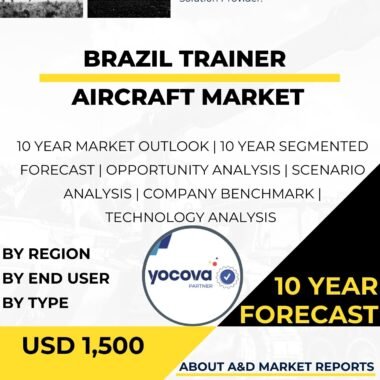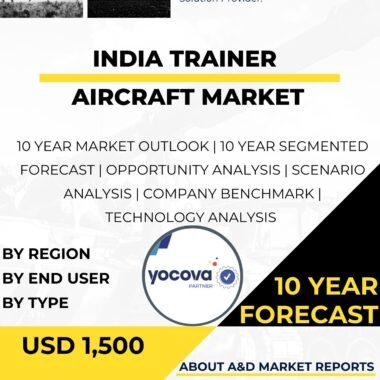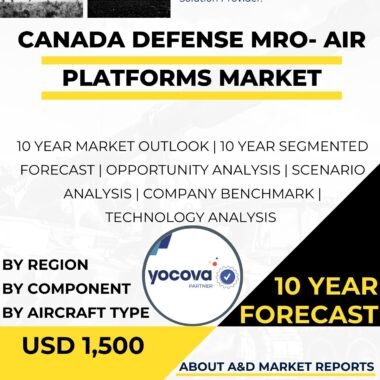Description
The Trainer Aircraft market in Malaysia has witnessed significant growth and development in recent years, reflecting the country’s commitment to enhancing its defense capabilities, improving pilot training programs, and fostering indigenous defense capabilities. Trainer aircraft are specialized aircraft designed to train military pilots and prepare them for more advanced and complex operational aircraft. The adoption of state-of-the-art trainer aircraft enables Malaysia to establish a modern and effective pilot training system, contributing to the country’s overall defense preparedness and aviation excellence.
As a nation with strategic geopolitical importance in Southeast Asia, Malaysia faces diverse security challenges, including the need to maintain a skilled and competent air force. The use of trainer aircraft allows Malaysia to develop and maintain a pool of well-trained pilots, ensuring a capable and versatile air force to safeguard its airspace and protect national security.
The Trainer Aircraft market in Malaysia has witnessed significant technological advancements. Modern trainer aircraft are equipped with advanced avionics, simulation capabilities, and cockpit systems, replicating the experience of flying more complex operational aircraft. These advancements have expanded the capabilities and operational effectiveness of trainer aircraft, making them indispensable tools for pilot training and skills development.
Moreover, trainer aircraft play a pivotal role in the capabilities of the Royal Malaysian Air Force (RMAF). The RMAF utilizes trainer aircraft to provide initial flight training to aspiring pilots, conduct advanced flight training, and upgrade skills for experienced pilots transitioning to new aircraft types. Trainer aircraft serve as the backbone of the RMAF’s pilot training pipeline, ensuring a steady supply of qualified aviators.
Additionally, the adoption of advanced trainer aircraft supports Malaysia’s commitment to enhancing its defense industrial base and fostering indigenous defense capabilities. The Malaysian government has shown interest in developing and manufacturing trainer aircraft through local research and development (R&D) initiatives and partnerships with global defense companies.
The Malaysian government has recognized the importance of international collaborations in acquiring and developing trainer aircraft technologies. Partnerships with leading global defense contractors and aircraft manufacturers have facilitated access to cutting-edge trainer aircraft and expertise. These collaborations have enabled technology transfer and capacity building, contributing to the growth of Malaysia’s domestic trainer aircraft capabilities.
While the Trainer Aircraft market in Malaysia shows promise, it is not without challenges. One of the primary hurdles is the high cost of acquiring and maintaining advanced trainer aircraft. These sophisticated training platforms require significant investment in research, development, procurement, training, and logistical support. Budget constraints may impact the pace and scale of trainer aircraft acquisition and modernization efforts.
Moreover, ensuring skilled pilot instructors and specialized training are essential for maximizing the benefits of trainer aircraft. The Royal Malaysian Air Force must invest in continuous training and education to ensure its instructor pilots possess the necessary expertise to provide high-quality training to the next generation of aviators.
Additionally, addressing the evolving training needs and incorporating simulation technologies into training programs is crucial for effective pilot development. The RMAF must adapt its pilot training curriculum to reflect modern training methodologies and incorporate advanced simulation capabilities for more cost-effective and comprehensive training.
Looking ahead, the Trainer Aircraft market in Malaysia is poised for further growth. The government’s commitment to enhancing its defense capabilities, improving pilot training programs, and investing in advanced trainer aircraft technologies will drive continued investments in pilot development. As trainer aircraft technologies continue to evolve and demonstrate their effectiveness, they are likely to play an increasingly pivotal role in Malaysia’s defense and aviation training strategy.
Moreover, Malaysia’s participation in regional security collaborations and joint military exercises will likely influence its trainer aircraft requirements. As the country seeks to strengthen its position as a key player in regional defense and security cooperation, the demand for advanced trainer aircraft with interoperability and compatibility with allied air forces will increase.
In conclusion, the Trainer Aircraft market in Malaysia has experienced significant growth and progress. The government’s focus on enhancing its defense capabilities, improving pilot training programs, and investing in advanced trainer aircraft technologies has paved the way for the integration of modern training platforms. International collaborations and domestic research efforts have positioned Malaysia as a participant in the global trainer aircraft technology landscape.
However, challenges related to budget constraints, technology development, training, simulation integration, and engineering expertise must be addressed proactively to sustain and enhance the growth of the Trainer Aircraft market in the years to come. By maintaining a modern and effective pilot training system, Malaysia can effectively enhance its defense preparedness, cultivate a skilled pool of pilots, and strengthen its overall air force capabilities.




